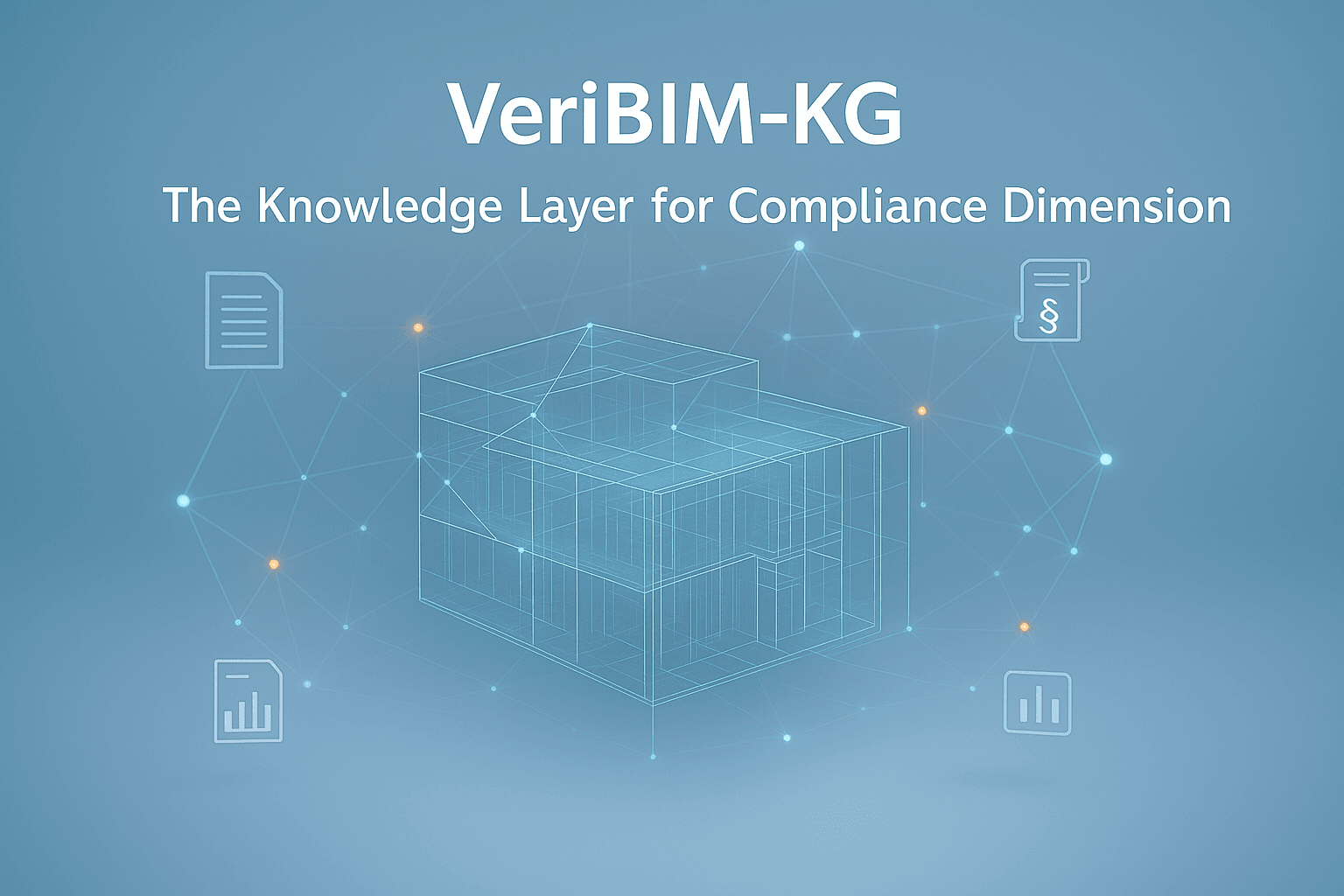Envisioning veribim-kg: The Knowledge Layer for Construction Compliance.



Tired of the Paper Chase? Envisioning veribim-kg: The Knowledge Layer for Compliance.
For decades, managing quality and compliance on a construction project has felt like a high-stakes treasure hunt. The clues are scattered everywhere: in hundreds of design drawings and specifications, in the dense paragraphs of building regulations, in British Standards gathering digital dust on a document management server, and in a mountain of inspection reports and quality records.
We've digitised parts of the process, certainly. We have powerful tools to capture thousands of photographic records and snagging issues. We have sophisticated BIM models and document management systems. But what connects them all? Too often, the "system of record" for this critical web of compliance is a labyrinth of manually updated Excel spreadsheets. The data is all there, but the meaning—the connection between a requirement and the evidence that proves it—is trapped in silos.
Construction Quality Managers ask critical questions every day:
- • "What specific regulations does this wall assembly need to meet?"
- • "Has the design for this ventilation system actually been signed off against the relevant standards?"
- • "What checks do we need to put in place to ensure the constructed outcome matches the compliant design?"
- • "Where is the evidence that we did what we said we would do?"
Finding the answers means jumping between an Electronic Document Management System (EDMS), SharePoint, a snagging tool, and multiple 'master' spreadsheets. It’s slow, prone to human error, and in a high-stakes industry, that’s a risk we should no longer accept. All the necessary 'ingredients'—the technical solutions—are here and accessible.
What if you could ask these questions in plain English and get an immediate, evidence-backed answer?
The Vision: veribim-kg as the Missing Knowledge Layer
I believe the problem isn't a lack of data; it's a lack of data intelligence. Our projects are data-rich but information-poor. This is why I'm developing the concept for veribim-kg.
This isn't a proposal for yet another software platform to replace existing tools. Instead, it's a vision for a Knowledge Layer that would sit across and augment them all.
Imagine a project "brain." Based on Knowledge Graph technology, veribim-kg would dynamically map the relationships between every piece of project information, creating a living web of understanding:
- • It would link a door in a BIM model directly to the fire safety regulations it must comply with.
- • It would connect a piling specification to the relevant British Standard, the Inspection and Test Plan (ITP), and the photographic evidence from the foundation pour.
- • It would tie a client's requirement directly to the design elements addressing it and the quality records that prove it was built to specification.
The goal is to break free from the spreadsheets. Veribim-kg wouldn't replace a system; it would make it smart.
How It Would Work: An AI Compliance Assistant, Grounded in Reality
The key is using a technique called RAG (Retrieval-Augmented Generation) to leverage both Knowledge Graphs and a Large Language Model (LLM). This, in my view, could create the intelligent Knowledge Layer we need.
If an LLM on its own is a brilliant generalist, then RAG is what would turn it into a project-specific expert. It would work by first retrieving the most relevant information from a Knowledge Graph—specific regulations, BIM data, and quality records. It would then augment the AI's prompt with this exact project knowledge, generating a precise and contextual answer.
This means you would get the power of AI, grounded entirely in your project's truth, not generic information and hallucinations. It would provide auditable answers, complete with source references.
You could simply ask questions and get instant, evidence-based responses:
-
"What legal and stakeholder requirements must this part of the BIM model comply with?"
The system would list all applicable Building Regulations, Planning Conditions, and Client Requirements linked to that specific component.
-
"Does the current design comply with these requirements?"
It would cross-reference the design data with the regulation text, highlighting any discrepancies or confirming compliance.
-
"What is the plan to assure the construction outcome will comply?"
It would pull up the relevant section of specifications and standards, outlining specific Inspection and Test Plans (ITPs).
-
"Do the records provide evidence for compliance?"
It would retrieve all signed-off checklists and photographic evidence linked to the constructed element, building your golden thread in real-time.
A Paradigm Shift, from Reactive to Proactive
Veribim-kg is a conceptual blueprint for a fundamental shift. It envisions moving quality management from a reactive, document-chasing process to a proactive, insight-driven discipline. It's about empowering project teams to prevent defects instead of just recording them, and building a robust, demonstrable "golden thread" for handover.
The future demands that we not just build digitally; it requires that we connect our digital knowledge to build with certainty.
This is currently a concept I am developing, wearing both my Quality Manager and software developer hats. Does this vision resonate with you? I'd love to connect with others who are passionate about solving this challenge and explore how we can make this a reality.